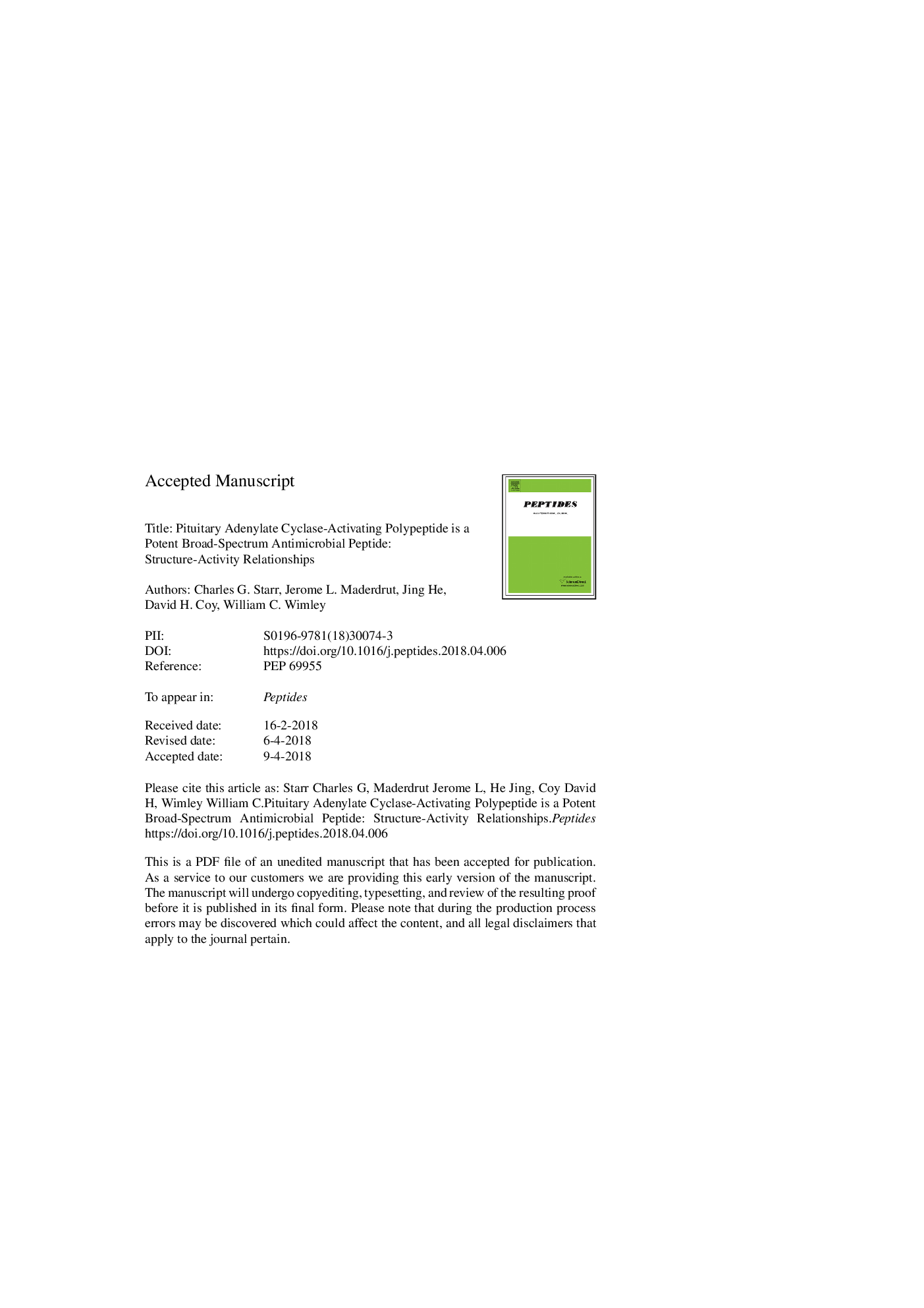| کد مقاله | کد نشریه | سال انتشار | مقاله انگلیسی | نسخه تمام متن |
|---|---|---|---|---|
| 8347309 | 1541675 | 2018 | 31 صفحه PDF | دانلود رایگان |
عنوان انگلیسی مقاله ISI
Pituitary adenylate cyclase-activating polypeptide is a potent broad-spectrum antimicrobial peptide: Structure-activity relationships
ترجمه فارسی عنوان
پلیپپتید فعال آدنیلات سیکلاس هیپوفیز پپتید ضد میکروبی قوی و گسترده است: روابط فعالیت ساختاری
دانلود مقاله + سفارش ترجمه
دانلود مقاله ISI انگلیسی
رایگان برای ایرانیان
کلمات کلیدی
موضوعات مرتبط
علوم زیستی و بیوفناوری
بیوشیمی، ژنتیک و زیست شناسی مولکولی
زیست شیمی
چکیده انگلیسی
Pituitary adenylate cyclase-activating polypeptide (PACAP) is a naturally occurring cationic peptide with potent immunosuppressant and cytoprotective activities. We now show that full length PACAP38 and to a lesser extent, the truncated form PACAP27, and the closely related vasoactive intestinal peptide (VIP) and secretin had antimicrobial activity against the Gram-negative bacteria Escherichia coli in the radial diffusion assay. PACAP38 was more potent than either the bovine neutrophil antimicrobial peptide indolicidin or the synthetic antimicrobial peptide ARVA against E. coli. PACAP38 also had activity against the Gram-positive bacteria Staphylococcus aureus in the same assay with comparable potency to indolicidin and ARVA. In the more stringent broth dilution assay, PACAP38 had moderate sterilizing activity against E. coli, and potent sterilizing activity against the Gram-negative bacteria Pseudomonas aeruginosa. PACAP27, VIP and secretin were much less active than PACAP38 in this assay. PACAP38 also had some activity against the Gram-positive bacteria Bacillus cereus in the broth dilution assay. Many exopeptidase-resistant analogs of PACAP38, including both receptor agonists and antagonists, had antimicrobial activities equal to, or better than PACAP38, in both assays. PACAP38 made the membranes of E. coli permeable to SYTOX Green, suggesting a classical membrane lytic mechanism. These data suggest that analogs of PACPAP38 with a wide range of useful biological activities can be made by judicious substitutions in the sequence.
ناشر
Database: Elsevier - ScienceDirect (ساینس دایرکت)
Journal: Peptides - Volume 104, June 2018, Pages 35-40
Journal: Peptides - Volume 104, June 2018, Pages 35-40
نویسندگان
Charles G. Starr, Jerome L. Maderdrut, Jing He, David H. Coy, William C. Wimley,
